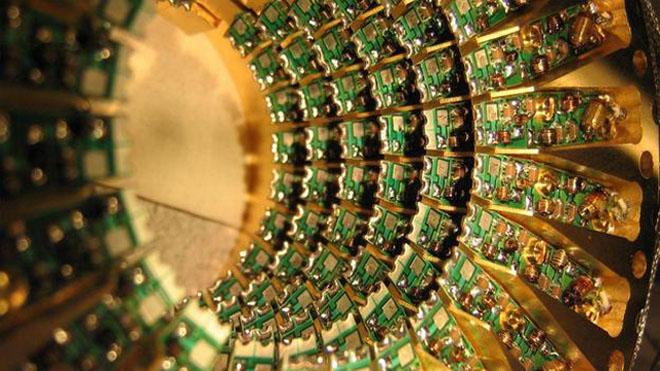Quantum Computers to Replace Chromebooks at Prep?
March 29, 2017
In recent years, scientists and computer engineers have theorized about the next major innovation in computing: the quantum computer. Now, according to Tom Simonite of MIT Technology Review, Google plans to create a working model within five years.
While a working model does not yet exist, the idea is that the machine would exploit the superposition state of electrons moving through a transistor. The undefined state of the current then would allow the computer to assign more expansive possible solutions to each qubit, while simultaneously running different calculations and simulations.
In a standard computer, information is expressed through bits of data, ones and zeros. However, in a quantum computer, data is expressed as qubits where the ones and zeros can be both simultaneously. A qubit can be both a one and zero due to its superposition.
Superposition was explained best by an Austrian theoretical physicist Erwin Schrödinger: If you were to place a cat in a closed box with a flask of poison that had an equal possibility of breaking or withstanding the hit of a hammer, the cat would be in a superposition state of both alive and dead because the current state of the cat is unknown. As the closed box is opened, the laws of the universe determine if the cat will be alive or dead, unveiling the superposition, expressing the definitive position of the cat.
This theorem is applicable to the quantum states of particles, and it’s not just the big computing companies who are exploring the technology. Information provided by D-Wave, one of the new companies working to develop these new computers, electron particles exist with magnetic field induced spins. These spins will be assigned numerical values to express data. However, the spins of these electrons are in a superposition state until they are measured by the computer. Therefore, the amount of information that can be contained in a set of qubits can be calculated by two to the power of the amount of qubits. A mere 16 qubits can hold over a million bits of information. Additionally, 264 qubits could represent more bits of information then atoms in the visible universe, over 2.6 *10^66 terabytes, 26 followed by 65 zeros!
Quantum Computers will likely be the scientific processors of the future, allowing vast calculation that previously took years to calculate to produce in seconds. However, with great scientific advancements comes great fright concerning the harmful actions that the device may cause if it were in the wrong hands.
Banking systems operate on the foundation of vast innumerable calculations, to encrypt routing information and account transactions. Current decryption systems, follow a linear path, shifting from test 1, to 2, … However, a quantum processor contains the computational capabilities to exponentially eliminate extraneous, or false, solutions, accelerating the decryption system to arrive at an immediate answer.
The bodies of Quantum Computers are similar to a standard supercomputer shell. The tower style housing provides a key element to all computers, heat cooling. Pumping in gaseous carbon dioxide, slightly above the level of absolute zero. The structure of the cooling apparatus gets older as it comes closer to the quantum processor, with the processor a few thousandths of a kelvin above absolute zero.
The unlimited capabilities of quantum computing will foster a technological future without the restrictions of our world, and exploit the phenomenon of the quanta, but when will students be able to tote these machines to class? Like the machines themselves, the answer still doesn’t exist.


